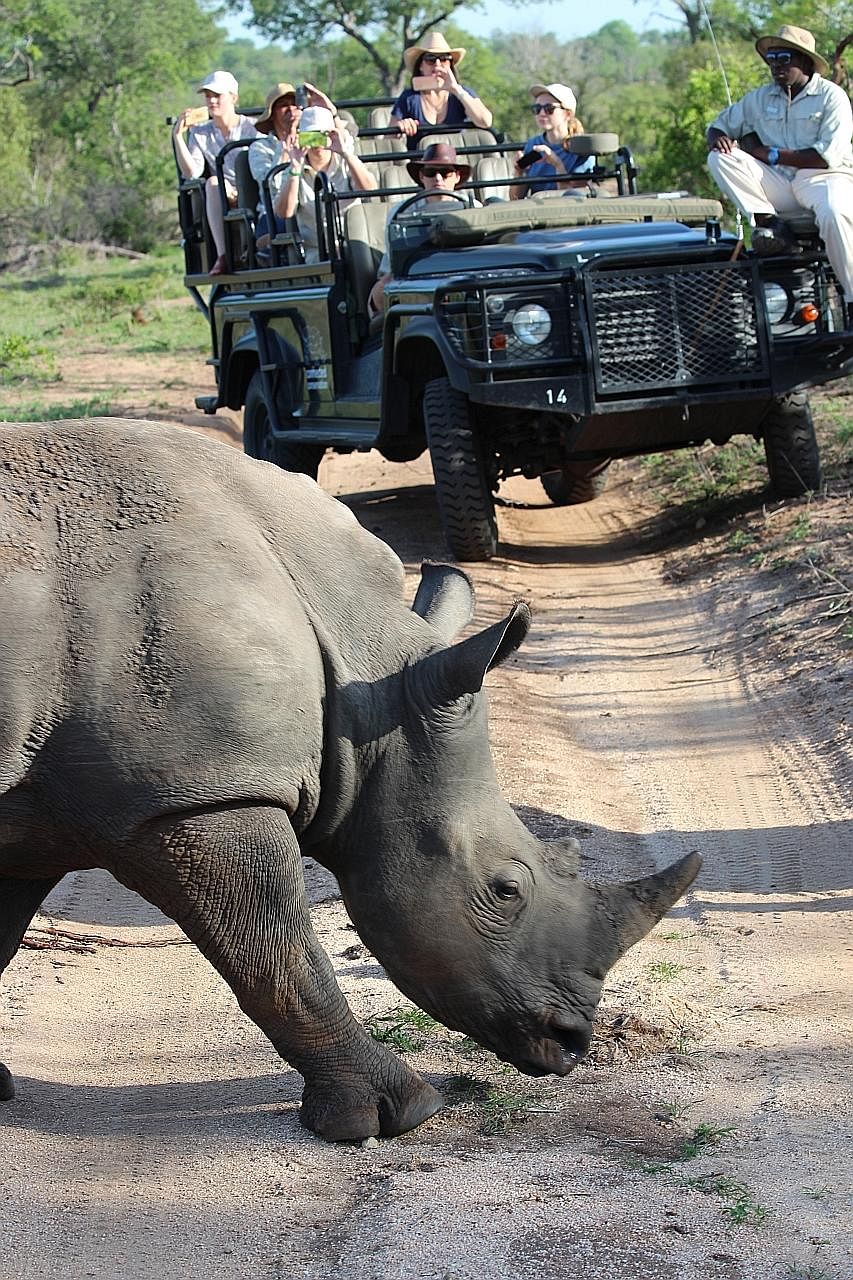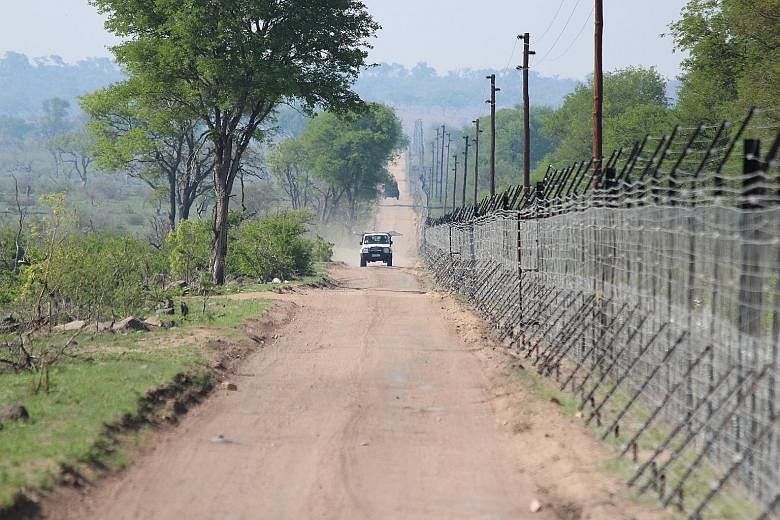Poachers have hunted the endangered rhinoceros to near extinction, and to save the animal, conservationists sometimes have to remove its horn.
The horn can fetch up to US$80,000 (S$114,000) per kilogram on the international black market - eight times the price of a kilogram of ivory.
But this method of protecting the rhino is intrusive.
Instead, a new high-tech solution has been developed to keep poachers away from the reserves where the animals are located.
It involves the use of advanced technology - such as thermal imaging, sensors and biometric scanning - to track and monitor the movement of people within the reserve.

The goal is to intervene and stop people entering the reserve illegally before they kill an animal.

The first-of-its-kind programme has been successfully piloted at a 62,000ha private game reserve in South Africa. More than 70 per cent of the world's rhinoceroses are found in the country.
Results from the first phase of the pilot, which started in January last year, showed that the technology helped to reduce the number of rhino kills by 96 per cent compared with before the technology was used. Dubbed Connected Conservation, the solution is a joint initiative by international technology companies Dimension Data and Cisco.
The strategy is a marked change from other tactics used by conservationists to keep poachers away from the rhino's horn.
Conventional methods to ward off poachers often involve interaction with the animal. They include tranquillising the rhino so sensors for tracking the creature can be inserted into its horn and under its skin, and removing its horn completely.
Both have drawbacks. Tranquillising a rhino puts it at risk of becoming blind or lame due to the drugs involved; and removing a rhino's horn deprives it of a tool for defence or attracting mates.
Mr Bruce Watson, Dimension Data's lead for global strategic relationship with Cisco, told The Straits Times during a site visit to the reserve earlier this week: "Many of the solutions that are in place today are reactive solutions, and I think what that does is stress out the animal because you are interacting with the animals.

"So what we've done is to look at a proactive-type solution - protecting the land against human beings. People cannot get to the animals."
Closer to home, locally developed technology has excited conservation circles in Singapore and abroad.
Singapore researchers from technology firm Autodesk earlier this year came up with an easy-to-use 3D modelling software that was used by international marine group The Hydrous to monitor and document coral growth.

The National Heritage Board also used the Autodesk technology to scan and develop 3D models of 10 sculptures at Haw Par Villa, to be used for heritage documentation, preservation and presentation.
Local virtual reality start-up Hiverlab has partnered with art historian Michael Walsh, an associate professor at the Nanyang Technological University, to document an old Armenian church in Famagusta, Cyprus, that can be "explored" using virtual reality.
"We wanted to show how the sites looked like in different eras, the pivotal events that happened at each location, how one place is related to another and how people's lives have changed over time," said a Hiverlab spokesman.
Prof Walsh said: "It is truly a case of the hard sciences working in tandem with art history and cultural heritage, to breathe life into fragile and endangered sites, and to take them into the global classroom. The technology available today is unprecedented, but it needs to be content-driven."
Assistant Professor Akshat Kumar, from the Singapore Management University's School of Information Systems, said there is a growing trend of using technology in the conservation of societal or environmental resources.
He added: "The application of technology for several of our conservation issues holds great promise and has the potential to generate new insights for moving us closer towards a sustainable future."

